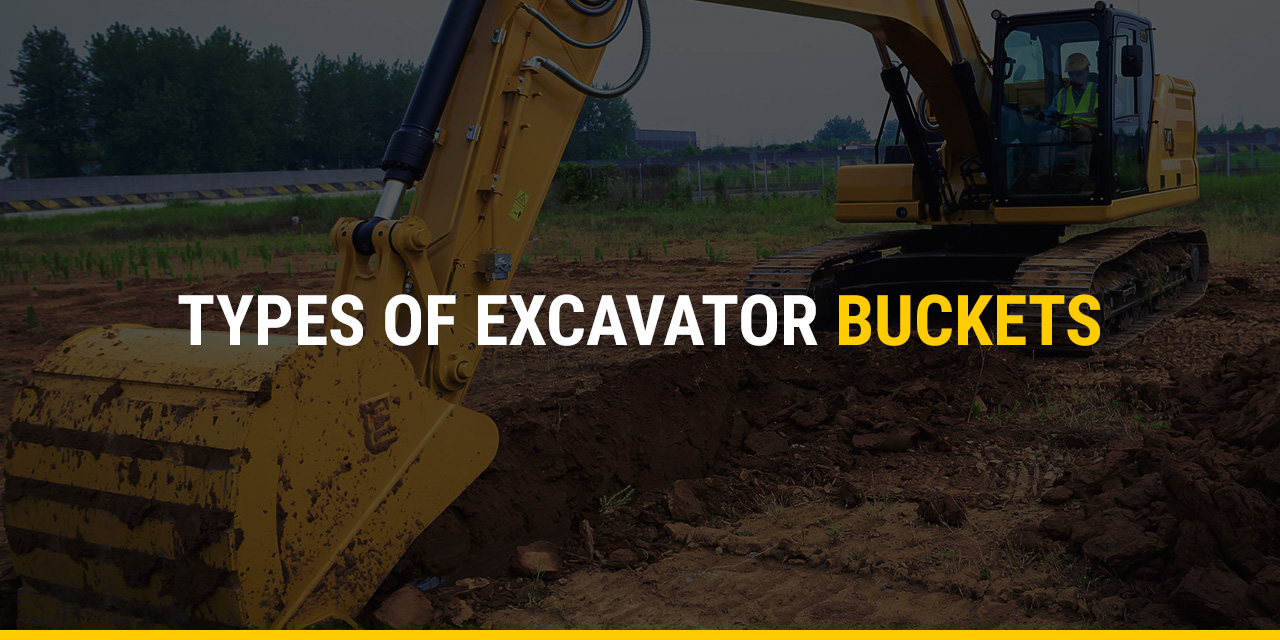
The right excavator bucket is key to making sure your excavator can accurately and efficiently complete a task. You have a wide variety to consider, and you might not know where to start. This guide will walk you through the different types of excavator buckets and help you understand which one is best for your job.
Here are the excavator bucket types you have to choose from and the jobs they most commonly do:
Jump To Sections:
General purpose excavator buckets are versatile, making them a great choice if your worksite is not focused on one specific task. Because you can use them for such a wide variety of tasks, they are the bucket of choice when a client does not specify the type of bucket they want on their excavator.
A general purpose excavator bucket is characterized by short, blunt teeth that are available in a number of sizes.
Grading excavator buckets offer smooth edges, flat cutting edges and wide builds. Some of their more unique characteristics include lift eyes, reversible bolt-on cutting edges and weld-on side cutters. These buckets also have a lot of versatility, specifically for loading a variety of materials.
Grading buckets can also be called ditching or clean-up buckets. You can use them in many contexts, including ditch maintenance, slope shaping, landscaping, utility work and road construction. Grading buckets traditionally have a straight edge, no teeth and a flat surface. The flat surface makes it easy to smooth out various surfaces.
Heavy-duty buckets are sometimes called severe-duty buckets and are made to be incredibly durable. Abrasion-resistant, high-strength steel is commonly used to make these buckets. You will often find contractors using them in rock quarries or other areas where materials need to be dug or loaded out of a strong area.
They are also meant to be able to load heavy material with as few passes as possible. Some include a straight edge or spade nose so they can accept different types of teeth and excavate the right materials. Heavy-duty buckets often haul hard-packed clay, stone, ripped basalt, gravel, blasted rock, sharp rock, high-silica sand, gravel, shale and shot granite.
A trenching excavator bucket is meant for working in small spaces, such as narrow cable trenches, drains and pipes. Trenching buckets are often used for digging trenches. They are unique in that they can deepen a trench quickly.
When working on digging a trench through an area that has a lot of obstacles, trenching buckets make it easy to be precise and avoid pipes and other obstructions. You can choose different size buckets based on the size of the trench you are trying to build. Trenching buckets are also a great tool for back-filling ground that is not too hard.
Angle tilt excavator buckets are similar to grading buckets but can rotate 45 degrees in both directions. That makes them a great tool for creating precise slopes. They also make it possible for excavators to stay stationary while still having the flexibility to mold and shape the land.
Because you do not need to move the entire excavator very often, you will save time on projects that involve heavy-duty construction. Angle tilt buckets can be used for sloping, grading, finishing, trenching, ditch cleaning, leveling and many other applications.
When choosing the right excavator bucket, finding the right size is an essential part of the process. You must first determine the intended use of the bucket.
Say you are digging a trench. You will need to choose a bucket that is smaller or the same width as the trench you are going to build. If you are using the excavator bucket to move heavy materials, make sure you choose a bucket that is sturdy and large.
The size of the bucket you choose will also depend on the size of your excavator and the type of bucket you want to use. To increase efficiency, use an excavator and choose a type of bucket that will allow you to have the largest bucket you can to still accurately complete your project.
| Excavator Weight (tons) | Standard Bucket Width (inches) | Grading Bucket Width (inches) |
|---|---|---|
| >0.75 | 6-24 | 30 |
| 1-1.9 | 6-24 | 36-39 |
| 2-3.5 | 9-30 | 48 |
| 5-6 | 12-36 | 60 |
| 7-8 | 12-36 | 60-72 |
| 10-15 | 18-48 | 72 |
| 19-25 | 18-60 | 84 |
To help determine the necessary excavator bucket size, use these general sizing rules and dimensions:
Louisiana Cat desires to provide our clients with superior value, exceeding their expectations.
We offer a variety of Cat® excavator buckets to ensure you have what you need to get the job done. We also supply numerous equipment attachments, including excavator bucket attachments. Our mini excavators come with several mini excavator bucket types, as well.
Contact us today for a free quote on Cat excavator buckets. If you want to visit one of our showrooms, you can find our locations here.